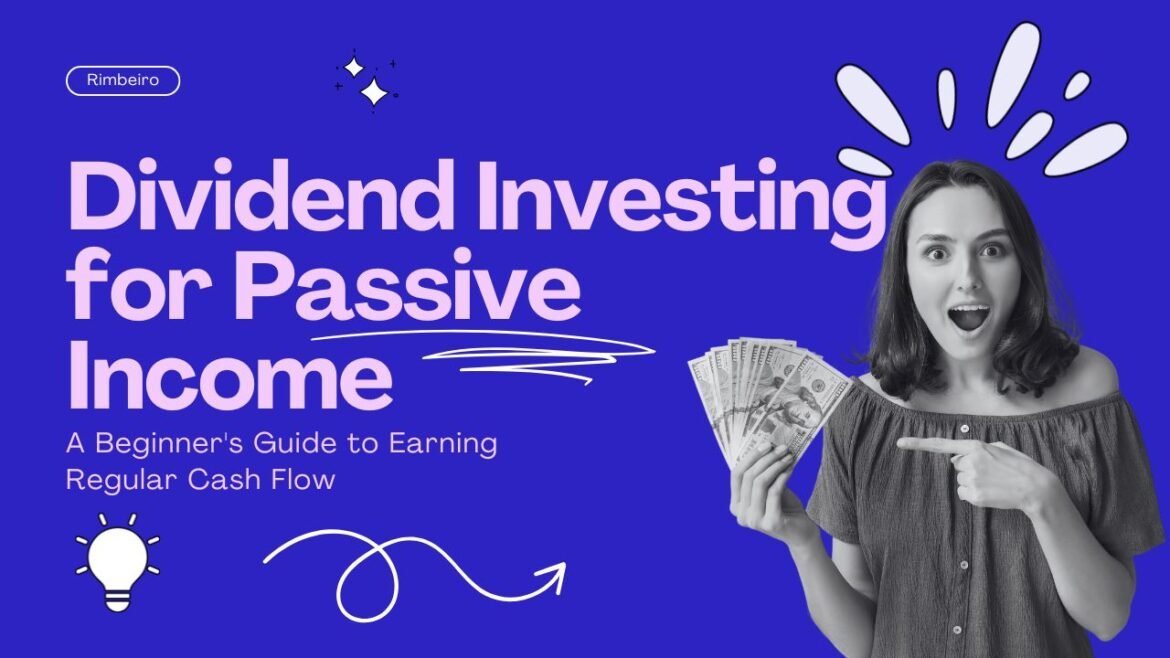Imagine earning money while you sleep, without having to actively work or sell assets. This dream of passive income is a reality for many through dividend investing. For beginners, understanding how to harness the power of dividends can be a game-changer, transforming your investment portfolio into a consistent source of cash flow that can fund your lifestyle, cover expenses, or accelerate your wealth-building journey.
Dividends are essentially a share of a company’s profits distributed to its shareholders. When you own dividend-paying stocks or funds, you receive these payments, typically on a quarterly basis, without needing to sell your underlying shares. This strategy offers a unique blend of capital appreciation (as the stock price ideally grows) and regular income.
This beginner’s guide to dividend investing for passive income will demystify the process, explaining how to start dividend investing for beginners, identifying best dividend stocks and high-yield dividend ETFs, and outlining key strategies to build a robust portfolio that reliably pays you regular cash flow, helping you achieve true financial independence.
What is Dividend Investing?
Dividend investing is an investment strategy where individuals focus on buying stocks of companies that pay out regular dividends. These companies typically have a history of strong, consistent earnings and a commitment to returning a portion of those earnings to shareholders.
Key Concepts:
- Dividend: A payment made by a corporation to its shareholders, usually as a distribution of profits.
- Dividend Yield: The annual dividend payment per share divided by the share’s current price, expressed as a percentage. A higher yield means more income relative to the stock price.
- Dividend Aristocrats/Kings: Companies that have consistently increased their dividends for at least 25 or 50 consecutive years, respectively. These are often considered reliable dividend payers.
Why Invest in Dividends for Passive Income?
- Regular Cash Flow: Provides a consistent stream of income, whether you’re retired or still working.
- Compounding Power: Reinvesting dividends (buying more shares with your payouts) allows you to compound your returns, growing your portfolio and future income faster.
- Inflation Hedge: Dividends, especially from growth-oriented companies, can increase over time, helping to combat inflation.
- Stability: Dividend-paying companies are often mature, financially stable businesses that tend to be less volatile than growth stocks during market downturns.
- Psychological Benefit: Receiving regular payments can be motivating and reinforce good investing habits, especially for beginners.
How to Start Dividend Investing for Beginners
- Define Your Goals: Are you looking for immediate income, or long-term dividend growth? Your goal will influence your choice of stocks/ETFs.
- Open a Brokerage Account: You’ll need an investment account. Many best online stock brokers for beginners offer low or no trading fees. Choose a broker: Best Online Stock Brokers for Beginners 2025: Your Guide to Smart Investing.
- Fund Your Account: Transfer money from your bank account.
- Research Dividend-Paying Investments:
- Individual Stocks: Look for companies with a long history of paying and increasing dividends, strong financials, and a sustainable business model. Consider sectors like utilities, consumer staples, healthcare, and finance.
- Dividend ETFs (Exchange Traded Funds): These are baskets of dividend-paying stocks, offering instant diversification and lower risk than individual stocks. They’re excellent for beginners.
- High CPC Keywords:
high-yield dividend ETFs,best dividend ETFs for passive income
- High CPC Keywords:
- Dividend Mutual Funds: Similar to ETFs but often actively managed. ETFs vs. Mutual Funds: ETFs vs. Mutual Funds: Which is Better for Your Long-Term Portfolio?.
- Consider a DRIP (Dividend Reinvestment Plan): Many brokers allow you to automatically reinvest your dividends back into buying more shares of the same stock or ETF. This is a powerful way to accelerate compounding.
Key Dividend Investing Strategies
- Dividend Growth Investing: Focus on companies that consistently grow their dividends year after year, even if their initial yield is not the highest. This strategy prioritizes long-term income growth.
- High-Yield Investing: Focus on stocks or funds with very high dividend yields. Be cautious here – extremely high yields can sometimes indicate a struggling company or an unsustainable payout. Research thoroughly.
- Dividend Aristocrats/Kings Strategy: Invest specifically in companies that have demonstrated decades of consistent dividend increases. These are often reliable income generators.
- Sector Diversification: Don’t put all your dividend eggs in one industry. Spread your investments across various sectors to mitigate risk.
Risks and Considerations
- Dividend Cuts: Companies can cut or suspend dividends, especially during economic downturns. Diversification helps mitigate this.
- Interest Rate Sensitivity: Some dividend stocks (especially those with very stable, bond-like characteristics) can be sensitive to interest rate changes.
- Tax Implications: Dividends are taxable income. Understand qualified vs. non-qualified dividends and how they impact your tax bill. IRS guidance on dividends:
https://www.irs.gov/taxtopics/tc404 - Total Return vs. Just Yield: Don’t just chase the highest yield. Consider the company’s overall health and potential for capital appreciation as well. A stock with a lower yield but strong growth might provide a better total return (dividends + stock price appreciation).
Conclusion: Earning Regular Cash Flow for Your Future
Dividend investing for passive income offers a compelling path to building wealth and generating regular cash flow, making it an attractive strategy for beginners and seasoned investors alike. By focusing on quality companies with a history of consistent payouts and utilizing tools like high-yield dividend ETFs, you can create a portfolio that pays you consistently.
Remember to prioritize diversification, understand the companies you invest in, and consider reinvesting your dividends to truly unleash the power of passive income. With a disciplined approach, dividend investing can become a cornerstone of your journey towards financial freedom and a secure retirement.
Discover more from Motive Money
Subscribe to get the latest posts sent to your email.
